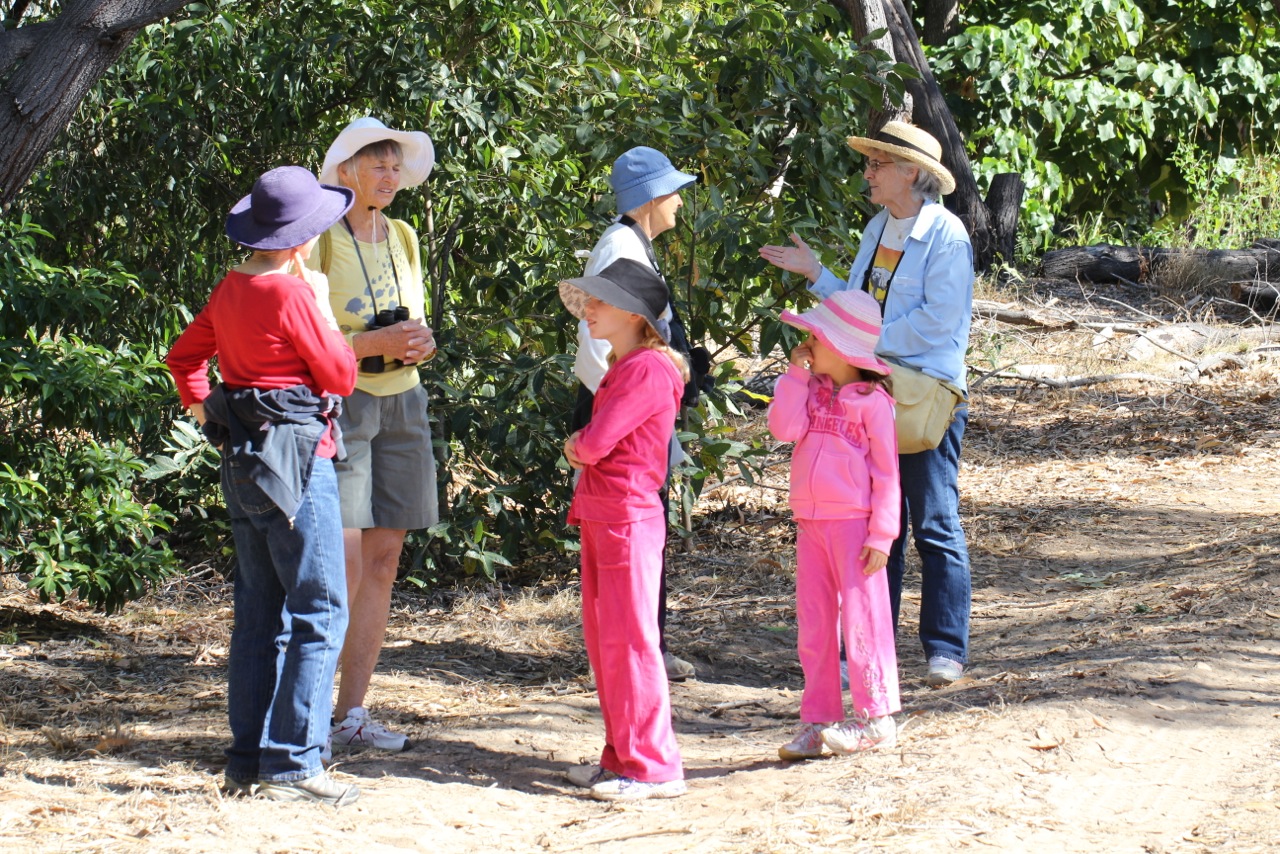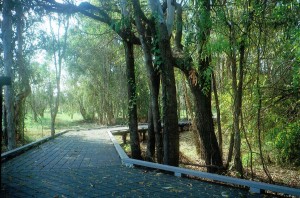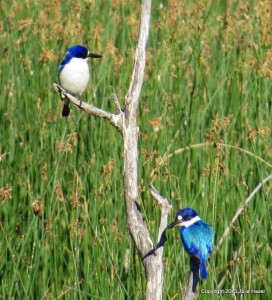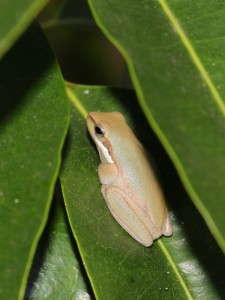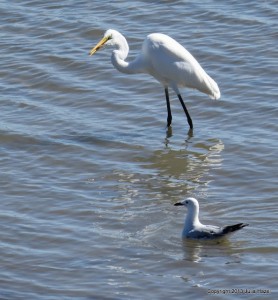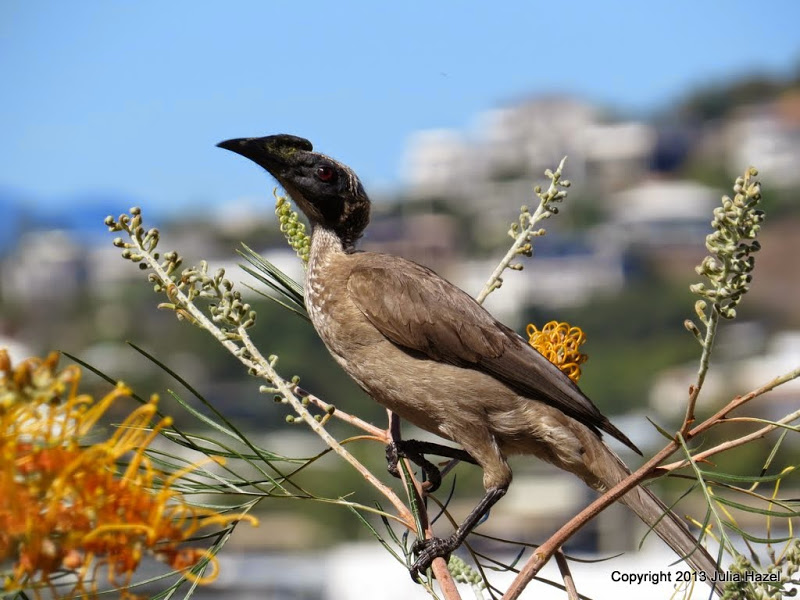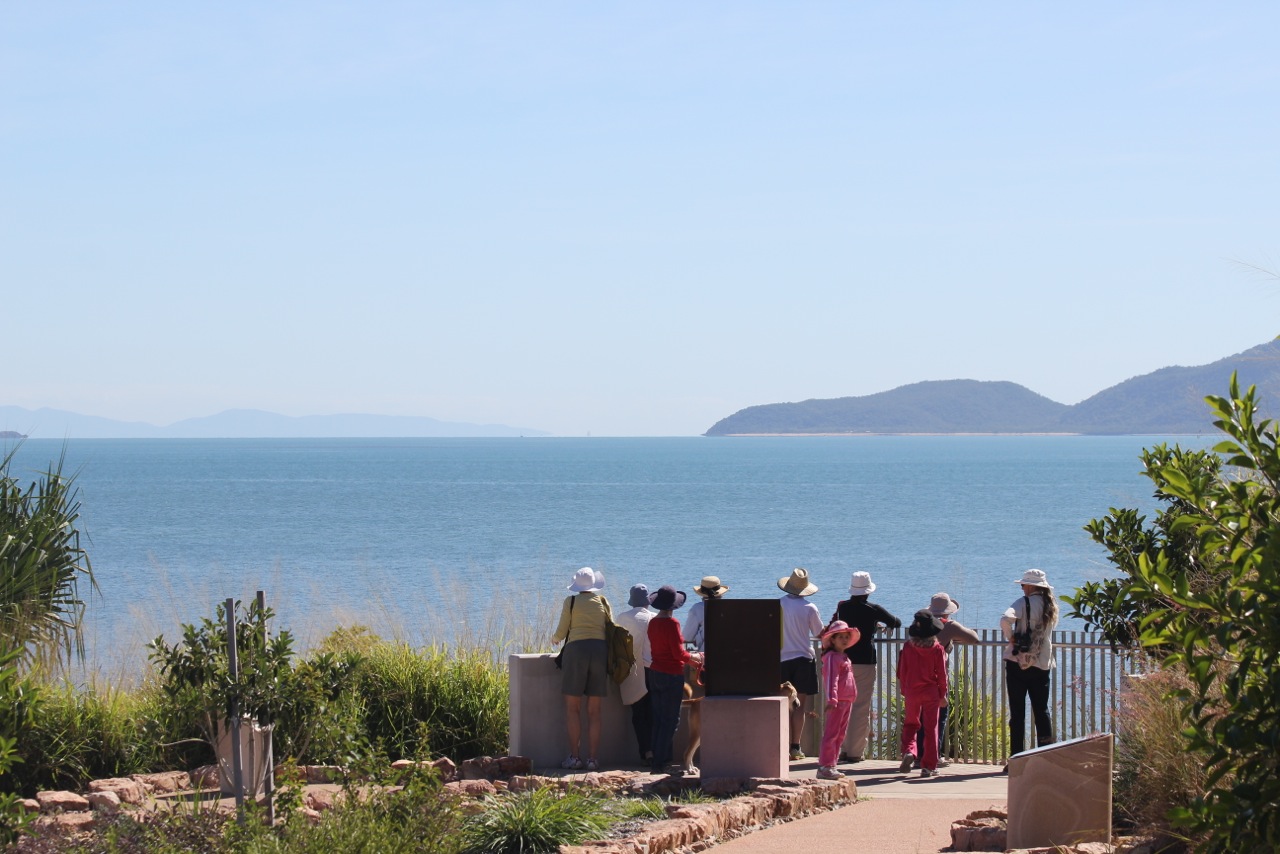A few hours before we gathered outside the Council’s sustainability centre on the Pallarenda road the temperature had dropped to 7.3C – but that did not stop an excellent roll-up of 18 members and friends. It was a special pleasure to welcome Sandra’s young grand-daughters, Samantha and Nikita, and one of our most long-standing members, Jo Wieneke, back in the north for a few weeks. Townsville has a number of hidden or only recently revealed natural treasures and this trip was designed to introduce people to two of them.
First stop on this brisk morning was the boardwalk bordering part of the Rowes Bay wetlands, which can be accessed by following the fence-line towards the wind turbine and then round the back of the ISS buildings. Created primarily as an educational resource it is available to anyone, with a good chance you will have it to yourself especially at the weekend. The boardwalk, made out of recycled milk bottles, was funded by Origin Energy and constructed by Green Corps and work-for-the-dole groups. Although quite short it is attractively shaded, predominantly by paperbarks, and provides excellent views across the swamp and lagoons, now shrinking as the dry sets in, to the enticing Sand Island. When sea levels were higher this was once a large dune and remarkably, given its proximity to airport and suburbia, its vegetation remains almost, if not entirely, undisturbed.
We took our time along the boardwalk identifying egrets, spoonbill and ibis from a distance while close to hand at least 5 forest kingfishers dazzled and posed for us in the sunshine. Making a circular trip we left the boardwalk and followed a sandy track through wattle, beach hibiscus, cocky apple etc, examining tiny ants, a long-jawed spider, the elaborate case of the case moth larva and a very small frog, Litoria fallax, dozing on a leaf.
Some had to leave us at the end of this walk, but most proceeded to the Rowes Bay Esplanade at the end of Cook Street and what to me is the most attractive access point to the Jezzine parklands. On such a sparkling morning we shared the climb up Garabarra Hill with other locals and visitors who have embraced this beautiful addition to Townsville’s recreational assets. This walk has been developed as an ethno-botanical trail with plantings of native species accompanied by information on their indigenous names and uses as well as their common western names. The views from various points along the way and from the Bill Coolburra lookout at the top were stunning on such a morning.
By now our numbers were dwindling, but 6 of us were hungry enough to devour an early lunch at the Odyssey Café before returning to our cars via the Kissing Point lookouts and the long timber boardwalk that skirts the shoreline.
Many thanks as always to our photographers, Julia and Malcolm, and to Jo for the bird list.
Footnote: One of my favourite places in Townsville is the little platform that juts out over the rocky shore at the end of Cook Street. Visit it at any time of day but late in the afternoon you can enjoy wonderful sunset views across the bay and witness the flamboyant display of flocks of rainbow bee-eaters who come to roost in the mangroves. If the tide is low(ish) walk back along the Esplanade to where you will see a path cut through the mangroves (opposite the end of Ryan Street). Walk through here, preferably in old shoes, to reach the rich intertidal zone where you may find yourself eyeballing a mangrove heron or watching brahminy kites soar overhead. With the mangroves at your back (hosting a small colony of quietly chattering black flying-foxes) and the waters of Rowes Bay spread out before you, it is easy to forget that you are on the edge of a city of nearly 200,000 people. Highly recommended as a stress reducer and mood-lifter.
| Straw-necked ibis | Sacred kingfisher | Brown honeyeater |
| Australian white ibis | Rainbow bee-eater | Helmeted friarbird |
| Great egret | Peaceful dove | Varied triller |
| Intermediate egret | Rainbow lorikeet | Yellow-bellied sunbird |
| Little egret | Leaden flycatcher | Spangled drongo |
| White-faced heron | Welcome swallow | Figbird |
| Royal spoonbill | White bellied cuckoo-shrike | Magpie lark |
| Australian pelican | Black-faced cuckoo-shrike | Great bowerbird |
| Masked lapwing | Yellow honeyeater | |
| Forest kingfisher | White-throated honeyeater |





